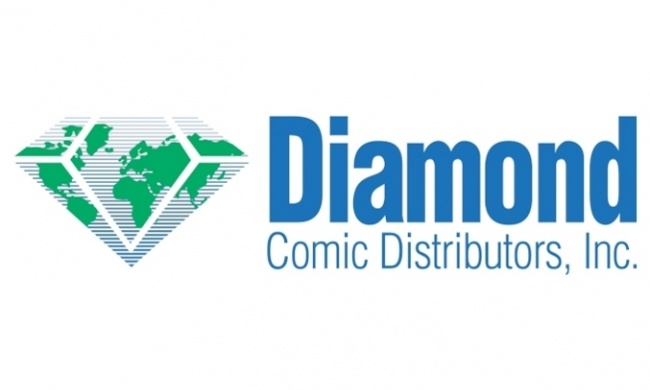Diamond resumed reporting some comic sales information with August, by releasing its rankings of the top comics and graphic novels it sold to retailers that month (see "Top 500 Comics – August 2020"). We applaud that step, as it provides some information on sales by the largest comic distributor, but we wondered about the months between Diamond reports, as they last provided full sales info for March, the last month before their seven-week COVID shutdown in April and most of May.
We told Diamond we were happy to see some reporting resume, and asked whether any reporting was planned for April through July, and a spokesperson responded. "We are happy to restart this reporting as well and wanted to begin with the most recent month-end for simplicity sake," the spokesperson said. "With inconsistent deliveries in the supply chain and retail closures that varied regionally, the statistics for May, June and July did not provide meaningful comparisons to other periods. Any sales made during that time will be included in our end of year figures."
We also asked about the sales indexes that Diamond normally provides on comics and graphic novels, which show the sales of each title relative to Batman. This index is useful in showing retailers, and others, what orders from retailers were like across the market served by Diamond U.S. Also, we use those indexes and information from publishers to calculate the actual sell-in numbers for the full comics and graphic novel list, a technique that others also use.
Providing indexes is paused, the spokesperson said, while Diamond considers how to move forward. "The original index was based on the sales of the Batman periodical," the spokesperson told us. "Since we no longer distribute Batman we are re-evaluating our approach and for the time being, the index is suspended."
As the exclusive distributor of almost all comics to comic stores for over two decades, Diamond Comic Distributors was in a unique position: it was able to provide sales information that reflected the entire sales to the comic store channel. That’s been a useful tool to those of us that use that information to analyze and report on the business of comics, and for retailers trying to understand how sales in their stores may be the same or different from those in stores nationwide.
In recent years, that’s started to break down a little on the graphic novel side of the business as more comic retailers began buying at least some of their graphic novels from publishers, wholesalers, or distributors serving the book channel. To reflect that, in our annual joint analysis of the comics market, ICv2 and Comichron began including an estimate of the graphic novels purchased by comic stores from sources other than Diamond in our channel breakdown for 2019, see "Comics and Graphic Novel Sales Top $1.2 Billion."
But with the rapid developments in the COVID era, the ability to model sell-in for the whole channel is coming apart in spectacular fashion. DC’s sales to comic stores are going through three new distributors (including Penguin Random House Publisher Services, which is now selling graphic novels to comic stores). So even if Diamond was reporting all the months, with indexes that showed relative sales, all of the sales through those other three distributors would not be reflected.
The situation is further clouded by what appear to be pretty massive sales by Marvel at promotional prices, at least in August, which put numerous older Marvel releases atop the graphic novel unit sales rankings by Diamond, including volumes featuring Deadpool (lots), Inhumans, and Miles Morales (see "Top 500 Graphic Novels – August 2020"). Those older titles had much lower dollar ranks than unit ranks, leading to our conclusion that they were sold at promotional prices. A couple of more extreme examples: Return of the Living Deadpool was #8 in unit sales by Diamond in August, but #245 in dollars; Miles Morales Ultimate Spider-Man TP Vol. 1 was #9 in unit sales by Diamond in August, but #236 in collars.
To get a fuller picture of the comic store channel, we’re also publishing sell-through rankings provided by ComicHub for retailers using its POS system (see "Top 20 Comics – August 2020" and "Top 20 Graphic Novels – August 2020"). The differences in how the data behind these charts is collected compared to the information on charts of sales by Diamond are many. Here are some:
- Sell-in charts show all the launch sales happening on the same day, while sell-through sales happen over time, moving sales into different periods.
- Sell-in shows what retailers think they will sell, while sell-through shows what they actually do sell.
- Sell-in sales are influenced by incentive variants, which increase the number of copies ordered (to get a variant that can be sold at a premium price), but may not increase the number of copies sold at retail by the same amount.
- And, as we’ve noted in the ComicHub chart articles, the ComicHub stores are a non-random sample of the total, which may or may not be representative of what the total universe of stores sell.
While the ComicHub reporting is definitely not the same as a single distributor reporting sell-in, at least it’s an indication of what a significant number of comic stores are selling, so helpful in understanding consumer demand.
We’ll continue to report available information from Diamond and any other sources that can help understand the market, as it’s going to require info from multiple sources in this new world to get a complete picture.




